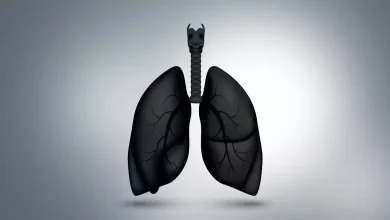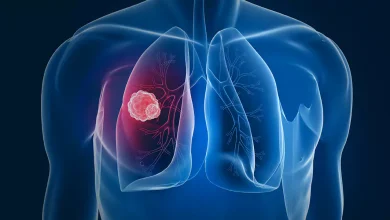All about Arachnoiditis

What is Arachnoiditis?
Arachnoiditis is a rare lifelong pain disorder that occurs because of inflammation (swelling) of the arachnoid, a membrane that revolves and safeguards the nerves of your spinal cord. Arachnoiditis leads to severe “burning” pain, stinging, and neurological disorders such as muscle weakness. It affects The nerves of your lumbar (low back) and thoracic spine (middle back) are most affected by it and rarely it affects your whole spine. There are various factors that can cause arachnoiditis and treatment is done to manage the symptoms and reduce the pain. The course of arachnoiditis remains exceptionally variable since it can be either static where the conditions remain the same (static) or can get worse over time (progressive).
What are The Types of Arachnoiditis?
The types of arachnoiditis include:
– Adhesive arachnoiditis: It’s the most serious and progressive type of arachnoiditis and it happens when the spinal nerves stick together because of arachnoid inflammation.
– Arachnoiditis ossificans: It happens when the arachnoid spreads to the bones.
– Cerebral arachnoiditis: Here the membrane surrounding the brain gets affected, and frequently causes severe headaches.
– Hereditary arachnoiditis: It’s a rare type of arachnoiditis that occurs because of genetic defects in the meninges.
– Neoplastic arachnoiditis: A form of arachnoiditis that develops because of cancer.
– Optochiasmatic arachnoiditis: This type of arachnoiditis occurs behind the optic nerve which can lead to severe or complete loss of vision.

What are the Symptoms of Arachnoiditis?
The symptoms of arachnoiditis vary on the basis of which part of your spine (which spinal nerve) is affected and it may vary from mild to severe. The main symptoms of arachnoiditis include:
-Pain in your spine
– Frequent Headaches.
– Sudden and severe mega pain that is similar to an electric shock sensation.
-Feelings of numbness, tingling, or weakness in your legs.
– You may feel sensations like insects crawling on your skin.
– Finding it difficult to sit in the same place for a long period
– Cramps in muscles, spasms, or twitching.
– Neurogenic bladder.
– Dysfunction in your bowel.
– Vision and hearing disorders
-Erectile dysfunction among men or vaginal dryness among women.
What Causes Arachnoiditis?
The causes of arachnoiditis include:
– Some kind of injury during spinal surgery, and it’s the most common cause of arachnoiditis which accounts for nearly 60 percent of cases
– Direct injury to your spine can also cause arachnoiditis
– If a dye is injected into your spinal column if you had myelography
– Getting exposed to chemicals might harm the meninges
– Infections including viral and fungal meningitis, tuberculosis or HIV might harm your spine which may lead to arachnoiditis.
– Lumbar puncture
– Cancer in or near the spine

What are the Risk Factors of Arachnoiditis?
The risk factors of arachnoiditis may include:
– Bacterial, viral, fungal or parasitic infections
– Diseases such as diabetes, AIDS, alcoholism, and organ transplantation which can make your immune system weak increase the risk of arachnoiditis.
– If you had a brain or spinal surgery then the risk of arachnoiditis increases.
– Using anaesthetics, steroids, and contrast media administered intrathecally
– Some types of cancers, especially non-Hodgkin’s lymphoma, melanoma, lung cancer, and breast cancer, along with cancers specific to the brain increase the risk of arachnoiditis.
– Smoking and an unhealthy diet
What Are The Complications of Arachnoiditis?
The symptoms of arachnoiditis may become serious and permanent if the scar tissue becomes hard like bone, and it can result in a rare complication called arachnoiditis ossificans where the pain spreads to the bones
Some common complications of arachnoiditis include:
- Bladder or bowel not functioning properly or at all
- Losing motor skills
- Difficulty in writing
- Finding it difficult to walk
- Losing the ability to sit or stand for a long time
- Lower-extremity paralysis
How Arachnoiditis is Diagnosed?
Your doctor may prescribe some tests to diagnose arachnoiditis including:
– Magnetic resonance imaging (MRI): During an MRI test, very clear images of the organs and structures within your body are taken by using magnetic fields and radio waves through which a doctor can check for some particular signs and symptoms of arachnoiditis, like the thickening of your nerve root and clumping.
– Computed tomography (CT) myelogram: It’s also an imaging test that checks the connection between your vertebrae and discs, by taking images of your spinal cord, nerves, and nerve roots where your doctor will detect the signs of arachnoiditis.
– Lumbar puncture: Here a sample of spinal fluid is taken through an injection for testing. This test is done to see if the arachnoiditis occurred because of infections in the spinal fluid.
– Electromyogram (EMG): An EMG helps to check the severity of arachnoiditis by using electrical impulses to detect the function of your spinal nerve
What are the Treatment Options Available for Arachnoiditis?
Arachnoiditis is a lifelong condition and there is no cure for it but the symptoms can be managed mainly to reduce the pain and manage the symptoms.
Doctors mostly recommend a few programs to ease the symptoms such as:
– Managing the pain
– Physical therapy, including hydrotherapy and massage in the affected area.
– Exercises such as stretching and range-of-motion
– Psychotherapy
– Using devices that can help you improve your mobility and make you comfortable.
Certain types of treatment may be used to ease the symptoms which include:
– Spinal cord stimulation: To relieve your pain a device known as a spinal cord stimulator is used which can transmit an electrical signal to your spinal cord and reduce pain.
– Medications: Medicines such as NSAIDs or stronger medications, are given for pain relief. Your doctor may prescribe some medicines including duloxetine, gabapentin, pregabalin, and muscle relaxants like baclofen to manage your symptoms.
Living with Arachnoiditis
It’s not that simple and easy to live with lifelong pain but with certain treatments, the pain can be relieved. Also because arachnoiditis affects both your physical and mental health, it’s quite vital to take proper treatment from a doctor who is specialised in treating arachnoiditis. Arachnoiditis can also affect your performance in a job or studies but you have to make yourself mentally strong to cope with it. You can join a support group, online or in-person where you can discuss with other patients which will help you to be relaxed mentally and get a support system.
Whom to Consult?
If you are diagnosed with arachnoiditis then you have to visit your doctor regularly and take proper treatment to ease the symptoms so that you can live a comfortable and normal life. Also, consult with your doctor and make a treatment plan which can help you with managing the symptoms of arachnoiditis. Arachnoiditis can lead to some mental issues especially depression so make sure that whenever you feel depressed, visit a psychiatrist who can help you to deal with mental issues.




